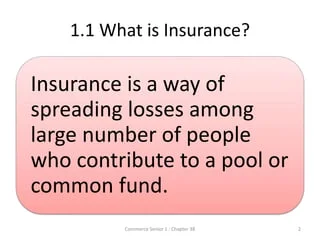Our Pacific Prime Statements
Table of Contents10 Simple Techniques For Pacific PrimeThe Main Principles Of Pacific Prime Unknown Facts About Pacific PrimeIndicators on Pacific Prime You Should KnowAll about Pacific Prime

This is since the data were gathered for a period of solid economic performance. Of the approximated 42 million individuals who were uninsured, just about concerning 420,000 (about 1 percent) were under 65 years of age, the age at which most Americans come to be eligible for Medicare; 32 million were adults in between ages 18 and 65, around 19 percent of all adults in this age group; and 10 million were kids under 18 years old, regarding 13.9 percent of all children (Mills, 2000).
These estimates of the number of individuals uninsured are produced from the yearly March Supplement to the Current Population Survey (CPS), performed by the Demographics Bureau. Unless otherwise noted, national price quotes of individuals without health and wellness insurance policy and percentages of the population with different type of insurance coverage are based upon the CPS, the most widely used source of estimates of insurance policy protection and uninsurance prices.
Some Ideas on Pacific Prime You Need To Know

Still, the CPS is especially useful because it produces annual price quotes fairly promptly, reporting the previous year's insurance coverage estimates each September, and due to the fact that it is the basis for a constant set of estimates for more than two decades, enabling analysis of patterns in insurance coverage over time. For these reasons, as well as the extensive use the CPS in various other research studies of insurance protection that are presented in this record, we count on CPS estimates, with constraints kept in mind.

The price quote of the number of without insurance people broadens when a population's insurance policy condition is tracked for numerous years. Over a three-year period beginning early in 1993, 72 million individuals, 29 percent of the U.S. https://peatix.com/user/21635503/view. populace, lacked protection for at the very least one month. Within a solitary year (1994 ), 53 million people experienced at the very least a month without insurance coverage (Bennefield, 1998a)
6 out of every ten without insurance adults are themselves used. Functioning does improve the possibility that one and one's household members will certainly have insurance coverage, it is not an assurance. Even participants of families with 2 full-time wage income earners have virtually a one-in-ten chance of being without insurance (9.1 percent uninsured rate) (Hoffman and Pohl, 2000).
Not known Incorrect Statements About Pacific Prime
New immigrants represent a significant proportion of individuals without medical insurance. One evaluation has associated a substantial part of the current development in the dimension of the U.S. uninsured population to immigrants that showed up in the nation in between 1994 and 1998 (Camarota and Edwards, 2000). Recent immigrants (those who involved the USA within the previous 4 years) do have a high price of being uninsured (46 percent), however they and their kids make up just 6 percent of those without insurance coverage across the country (Holahan et al., 2001).
The partnership in between medical insurance and access to care is well established, as documented later in this chapter. Although the connection in between medical insurance and wellness end results is neither direct nor easy, a considerable professional and wellness solutions study literary works web links health and wellness insurance coverage to enhanced access to care, better quality, and boosted personal and population wellness standing.
Levels of evaluation for checking out the resource results of uninsurance. This conversation of medical insurance protection focuses mainly on the U.S. populace under age 65 because virtually all Americans 65 and older have Medicare or various other public protection. It concentrates particularly on those without any kind of health and wellness insurance for any type of length of time.
Not known Details About Pacific Prime
The problems encountered by the underinsured are in some aspects similar to those encountered by the without insurance, although they are typically much less serious. Health insurance policy, however, is neither essential nor sufficient to get access to clinical solutions. The independent and direct result of health and wellness insurance coverage on access to wellness services is well developed.
Others will get the healthcare they require even without health and wellness insurance, by spending for it expense or seeking it from service providers that use treatment complimentary or at highly subsidized prices. For still others, health and wellness insurance alone does not make sure invoice of care due to various other nonfinancial obstacles, such as an absence of health care suppliers in their neighborhood, limited access to transport, illiteracy, or etymological and cultural differences.
See This Report about Pacific Prime
Formal research study concerning uninsured populations in the United States dates to the late 1920s and early 1930s when the Committee on the Cost of Medical Treatment generated a collection of records concerning financing physician office brows through and hospital stays. This issue became salient as the numbers of clinically indigent climbed throughout the Great Depression.